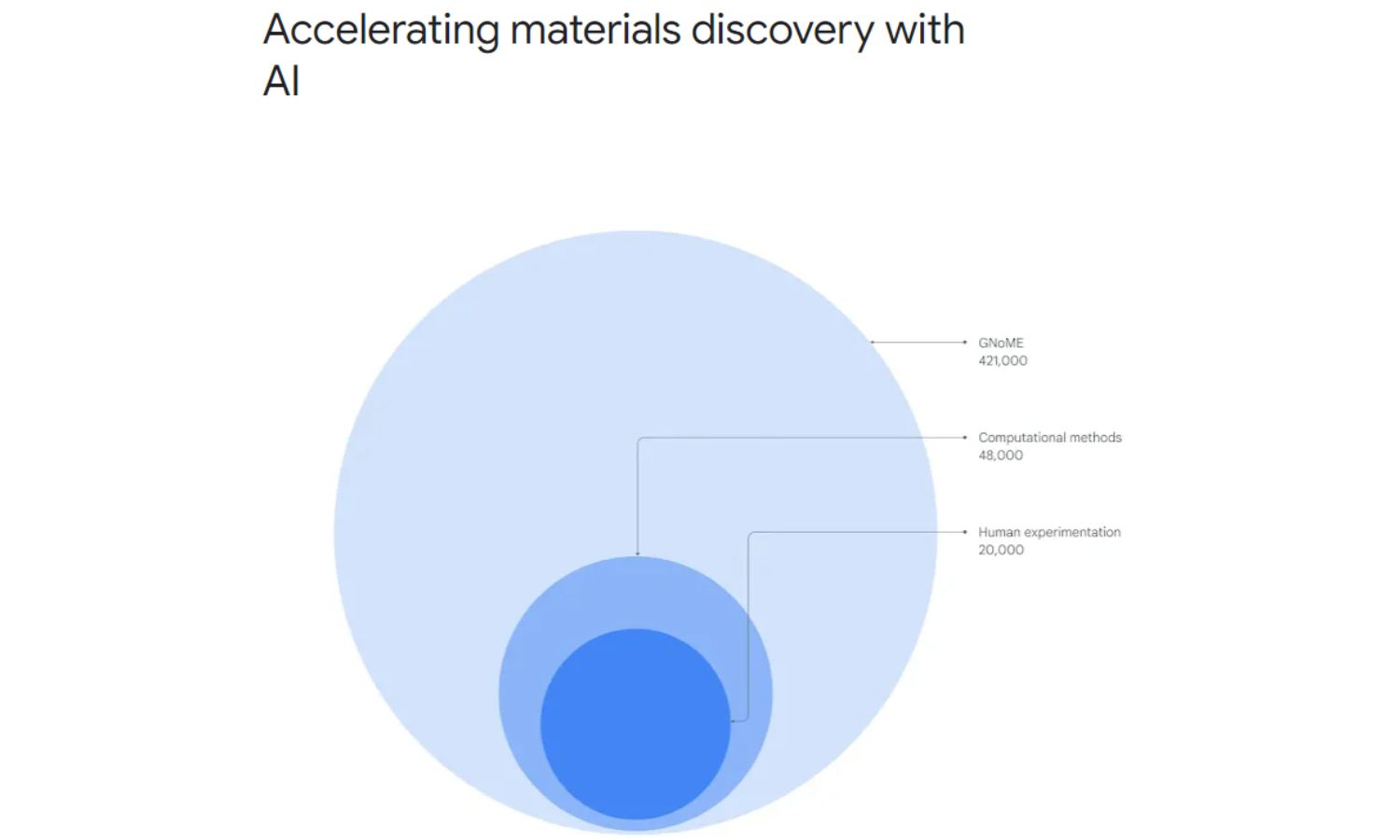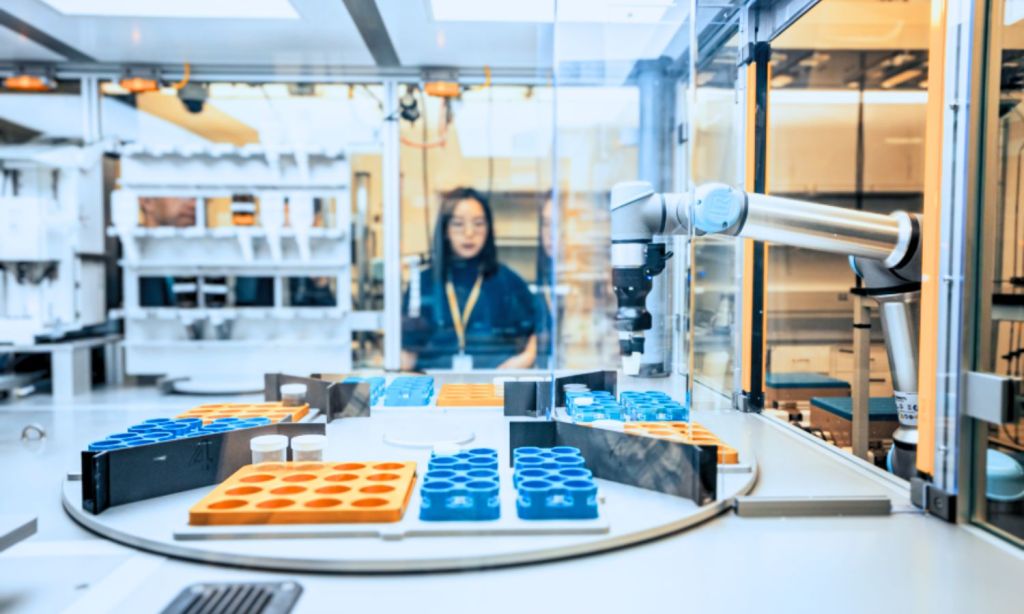Throughout all of human history, we’ve ‘only’ managed to discover around 20,000 inorganic crystalline structures. These are the fundamental components of virtually all modern technologies, from batteries to computer chips, and vital to technological progress.
In a major breakthrough, Google’s DeepMind research team have published findings of some 2.2 million new inorganic crystalline structures — more than 100 times the number we previously knew about. The groundbreaking discovery was made by, yep, artificial intelligence.
Google’s DeepMind team used an AI tool called the Graph Networks for Materials Exploration (GNoME). They trained the programme on Materials Project data — an open-source, international effort to discover all inorganic materials — and instructed it to predict the stability of novel materials. In doing so, they’ve managed to identify 380,000 never-before-discovered material compositions that they believe are stable and usable in new technologies.
“While materials play a very critical role in almost any technology, we as humanity know only about a few tens of thousands of stable materials,” Ekin Dogus Cubuk, a staff research scientist at Google Brain, said at a media briefing. He explained that the number of usable materials humanity is aware of is actually quite limited.
“Let’s say you want to find a new solid electrolyte for better batteries. These electrolytes have to be ionically good conductors but electronically bad conductors, and they should not be toxic, they should not be radioactive.
“Once you apply all these filters, it turns out we only have a few options that we can go with, which end up not really revolutionizing our batteries.”

The old-school method of trial and error, incrementally adjusting the structure of crystals and seeing if they hold, is incredibly time-consuming and resource-intensive. There have been previous efforts to use machine learning to identify new compounds, but these have also so far been fairly slow. The above-mentioned Materials Project has discovered around 28,000 new materials using predictive algorithms.
“GNoME’s discovery of 2.2 million materials would be equivalent to about 800 years’ worth of knowledge and demonstrates an unprecedented scale and level of accuracy in predictions,” Google DeepMind has said.
Of course, what they have really discovered is experimental blueprints for these materials. It’s now up to others to create and test the new structures. Google is releasing the predicted structures for free so that other scientists can begin to put them to use.
Already, some 736 of the new materials have been created in the lab, proving that they are theoretically viable. Machines too are putting in the groundwork to bring them to life. At the University of California Berkeley, an autonomous lab, powered by AI and robotic arms, has been testing new materials at 50 to 100 times the speed of a human since April. That lab has been working 24 hours a day, seven days a week, to synthesise 58 materials in that time, something that would have taken a human team 30-60 years to do.
Among the materials discovered by Google are 528 potentially new lithium-ion conductors that could be used in new batteries. 52,000 are layered compounds similar in structure to graphene which could provide the basis for new superconducting materials used in more efficient energy transfer.
Google have said that their discovery could revolutionise computing and green technologies, supercharging the transition to a clean-energy future.
“To build a more sustainable future, we need new materials. GNoME has discovered 380,000 stable crystals that hold the potential to develop greener technologies – from better batteries for electric cars, to superconductors for more efficient computing.
“Our research – and that of collaborators at the Berkeley Lab, Google Research, and teams around the world — shows the potential to use AI to guide materials discovery, experimentation, and synthesis.
“We hope that GNoME together with other AI tools can help revolutionize materials discovery today and shape the future of the field”.
Related: Half of Tech Industry Workers Think AI Is Overrated
Related: YouTube’s Solution to the AI Problem Is More AI — at the Expense of Us All
Read more stories from The Latch and subscribe to our email newsletter.







